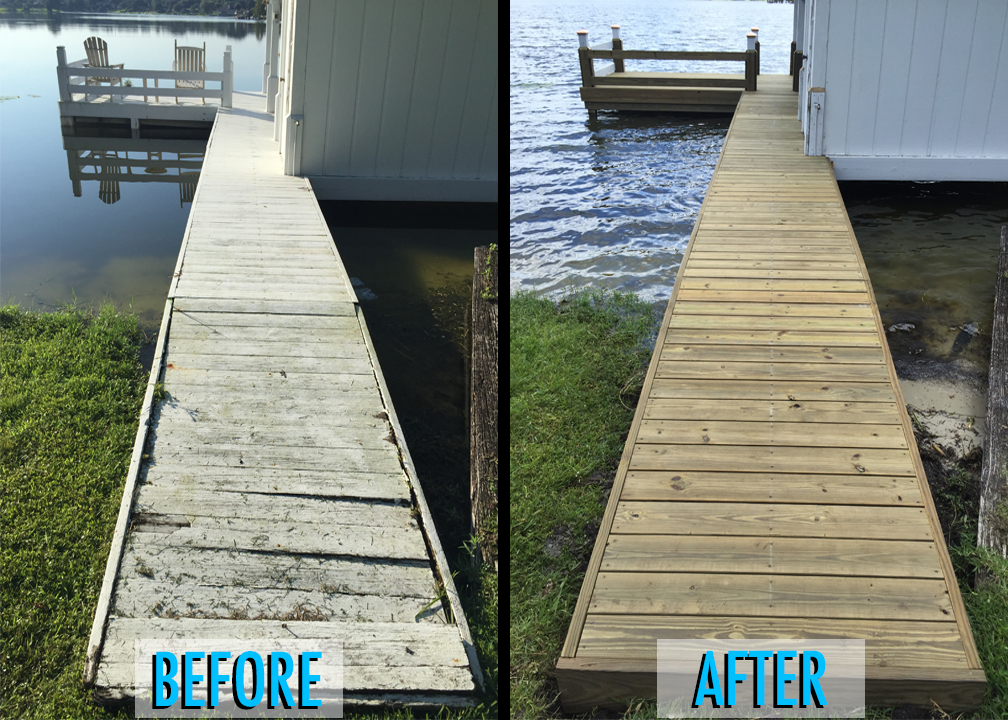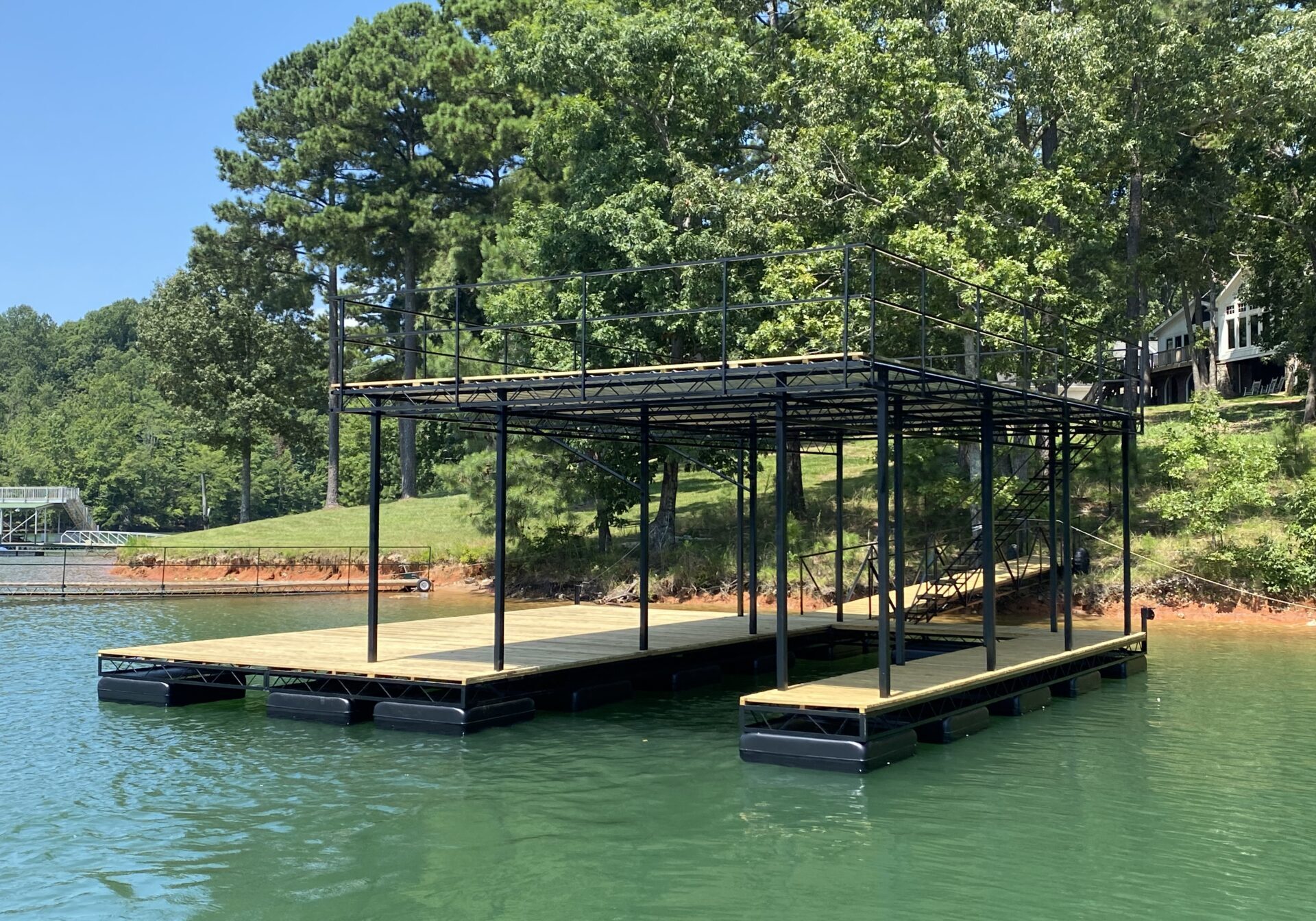Why Normal Maintenance Can Minimize Future Dock Repairs
Effective Dock Fixing Techniques: Making Sure Structural Honesty
Ensuring the structural stability of docks via efficient fixing methods is critical for the longevity and safety and security of marine centers. Subsequently, selecting the ideal repair products, such as composite products and corrosion-resistant alloys, is essential for longevity.
Analyzing Dock Damage
Assessing dock damages is a critical primary step in guaranteeing the structural honesty and security of any docking facility. This initial evaluation involves a thorough assessment to determine both surprise and noticeable problems. Key facets to take a look at include the dock's structure, pilings, decking, and hardware. Each element needs to be inspected for indicators of wear, rot, corrosion, or various other forms of destruction that can jeopardize the structural integrity.
Structural engineers or qualified assessors commonly carry out these analyses using specialized techniques and tools. For example, undersea inspections could utilize sonar equipment or from another location operated vehicles (ROVs) to find immersed damages. Above water, visual inspections are complemented by utilizing wetness meters and other diagnostic devices to uncover underlying issues not right away visible to the naked eye.

Picking Repair Service Materials
Choosing the ideal repair service products is a pivotal action in the dock repair procedure, one that straight influences the durability and efficiency of the repaired structure. Material selection need to be driven by aspects such as ecological problems, load-bearing needs, and compatibility with existing dock elements. Timber is a standard selection for anchors due to its natural strength and visual charm. However, picking the ideal kind of wood, such as pressure-treated lumber or normally rot-resistant varieties like cedar or teak wood, is important to hold up against aquatic atmospheres.
In enhancement to timber, composite materials are significantly preferred as a result of their toughness and low upkeep needs. Composites, generally made from a mix of plastic and wood fibers, supply superb resistance to rot, pests, and UV damage. For steel docks, picking corrosion-resistant alloys such as galvanized steel or marine-grade light weight aluminum is necessary to protect against corrosion and guarantee structural stability in saline water conditions.
Epoxy resins and marine-grade sealants are indispensable for fixing cracks and securing joints, providing a waterproof obstacle and improving the dock's total strength. By meticulously picking high-quality products, dock fixings can accomplish durable outcomes, thus securing versus future degradation and making certain risk-free, dependable use.
Structural Support Strategies
Efficient architectural support techniques are critical in making sure the security and durability of dock repair work. This method is specifically efficient for docks exposed to heavy lots or severe environmental problems.
Another crucial technique is the application of fiber-reinforced polymers (FRP) These materials offer high strength-to-weight ratios and exceptional resistance to rust, making them excellent for reinforcing concrete or wooden docks. FRP can be applied in strips or sheets and adhered with epoxy materials to improve architectural honesty.
Bracing and securing systems additionally play a vital role in architectural reinforcement. Cross-bracing, using steel or wood beams, can neutralize side forces, minimizing persuading and motion. Securing systems, such as Your Domain Name helical piers or driven stacks, provide a stable structure by transferring lots to much deeper, extra secure soil layers.
Lastly, the assimilation of load-distribution plates can assist distribute weight much more uniformly throughout the dock's surface, alleviating local anxiety factors. These techniques jointly guarantee that docks continue to be durable and safe, capable of standing up to the rigors of their operational environment.
Advanced Repair Methods

One more advanced strategy entails undersea welding, which permits for fixings to be conducted without the need to dewater the area. This approach is particularly useful for resolving structural problems in immersed dock components, guaranteeing minimal disturbance to procedures. Enhanced welding strategies, coupled with robotic systems, provide accuracy and integrity, thereby prolonging the life-span of the dock.
Furthermore, cathodic protection systems moved here are implemented to avoid corrosion in metallic dock structures. By utilizing sacrificial anodes or satisfied present systems, these methods successfully minimize the electrochemical procedures that bring about product deterioration.
Last but not least, advanced surveillance modern technologies, such as structural wellness surveillance (SHM) systems, offer real-time information on the condition of dock frameworks. These systems enable aggressive upkeep and timely interventions, inevitably guaranteeing the lasting structural honesty of the dock.
Maintenance and Prevention
Maintenance and avoidance are essential ideas that underpin the longevity and safety and security of dock structures. Normal evaluations are extremely important, enabling very early detection of damage, prospective weak points, and environmental effects. A proactive technique, entailing regular look for corrosion, rot, and structural shifts, reduces costly repairs and prolongs the dock's functional life.
Safety nets ought to consist of applying protective coverings to steel elements to defend against corrosion and making use of treated timber to resist degeneration. Additionally, ensuring correct drainage and ventilation can prevent water accumulation, which is a common reason of architectural destruction. Integrating quality products and adhering to maker guidelines throughout building and construction and fixing phases additionally play important duties in enhancing durability.

Training employees in dock maintenance finest practices makes sure constant application of preventive steps. Leveraging technological advancements, such as drones for evaluations and sensing my explanation units for real-time monitoring, can even more boost maintenance initiatives. By prioritizing upkeep and avoidance, dock owners can make certain architectural honesty, functional security, and economical monitoring over the dock's life expectancy.
Conclusion
Finally, maintaining the architectural integrity of aquatic centers demands detailed dock repair work methods. Thorough examinations making use of sophisticated tools reveal both visible and hid damages, while the selection of appropriate repair work materials boosts resilience. Executing architectural reinforcement techniques addresses stress and anxiety points successfully. Advanced repair work techniques, combined with normal maintenance methods, guarantee the dock stays risk-free and functional under diverse ecological problems. Taking on these methods significantly prolongs the life-span and performance of marine facilities.
Ensuring the architectural integrity of anchors with reliable repair work strategies is paramount for the durability and security of aquatic facilities.Picking the appropriate fixing products is an essential step in the dock reconstruction process, one that directly influences the durability and efficiency of the fixed structure.Efficient architectural support strategies are important in making certain the stability and long life of dock repair services. By focusing on upkeep and avoidance, dock proprietors can ensure structural integrity, functional safety and security, and economical monitoring over the dock's lifespan.
In final thought, preserving the architectural honesty of marine facilities requires detailed dock repair work strategies.